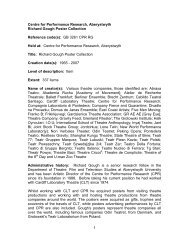Investigation of the optically stimulated luminescence dating method ...
Investigation of the optically stimulated luminescence dating method ...
Investigation of the optically stimulated luminescence dating method ...
Create successful ePaper yourself
Turn your PDF publications into a flip-book with our unique Google optimized e-Paper software.
Contents III<br />
4.6.1.1. Field NaI(Tl) gamma-ray spectrometry.........................159<br />
4.6.1.2. Low-background Ge gamma-ray spectrometry .............160<br />
4.6.2. Neutron activation analysis.............................................................164<br />
4.6.3. Thick source alpha counting ...........................................................167<br />
4.6.4. Evaluation <strong>of</strong> <strong>the</strong> results..................................................................168<br />
4.6.5. Conversion factors ..........................................................................173<br />
4.7. Age calculation, optical ages and discussion .............................................174<br />
4.8. Fur<strong>the</strong>r equivalent dose determination using SAR ....................................179<br />
4.8.1. Determination <strong>of</strong> <strong>the</strong> De distributions .............................................180<br />
4.8.2. <strong>Investigation</strong>s on <strong>the</strong> origin <strong>of</strong> <strong>the</strong> dose distributions .....................183<br />
4.8.2.1. Experimental artefact? ...................................................183<br />
4.8.2.2. Partial bleaching?...........................................................185<br />
4.8.2.3. Variations in microdosimetry?.......................................189<br />
4.8.3. Discussion .......................................................................................191<br />
4.9. Conclusions ................................................................................................192<br />
Chapter 5: Application <strong>of</strong> <strong>the</strong> optical <strong>dating</strong> <strong>method</strong> in a case-study – <strong>the</strong> Late<br />
Pleniglacial coversands <strong>of</strong> Grubbenvorst ....................................................................195<br />
5.1. Introduction ................................................................................................195<br />
5.2. Geological setting.......................................................................................195<br />
5.3. Independent age information......................................................................199<br />
5.4. Sampling and field measurements..............................................................202<br />
5.5. Equivalent dose determination...................................................................208<br />
5.5.1. Sample preparation .........................................................................208<br />
5.5.2. Aliquot preparation and presentation..............................................208<br />
5.5.3. Equivalent dose determination........................................................209<br />
5.5.3.1. Influence <strong>of</strong> <strong>the</strong> preheat temperature on <strong>the</strong> De .............209<br />
5.5.3.2. Influence <strong>of</strong> <strong>the</strong> size <strong>of</strong> <strong>the</strong> test dose on <strong>the</strong> De..............217<br />
5.5.3.3. Dose recovery tests ........................................................219<br />
5.5.3.4. Equivalent dose distributions.........................................226<br />
5.5.3.4.1. Dose distribution in <strong>the</strong> aeolian sample (G9) .....226<br />
5.5.3.4.2. Dose distributions in <strong>the</strong> fluvio-aeolian samples<br />
(G1, G7 and G8) .................................................231<br />
5.5.3.4.3. Dose distributions in <strong>the</strong> fluvio-aeolian / fluvial<br />
samples (G3 and G4) ..........................................235<br />
5.5.3.4.4. Dose distributions in <strong>the</strong> fluvial samples (G10 and<br />
G21) ...................................................................238<br />
5.5.3.4.5. Discussion...........................................................241<br />
5.6. Annual dose determination.........................................................................244<br />
5.6.1. Gamma-ray spectrometry................................................................244<br />
5.6.1.1. Field NaI(Tl) gamma-ray spectrometry.........................244<br />
5.6.1.2. Low-background Ge gamma-ray spectrometry .............245<br />
5.6.2. Neutron activation analysis.............................................................253<br />
5.6.3. Thick source alpha counting ...........................................................255<br />
5.6.4. Comparison and evaluation <strong>of</strong> <strong>the</strong> results.......................................259



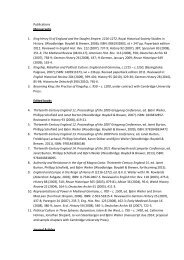
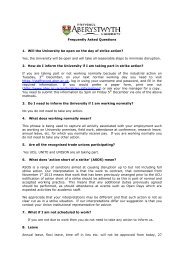



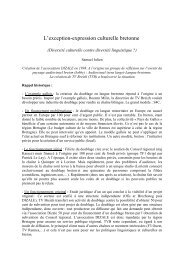

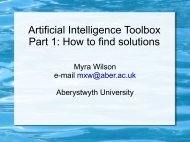


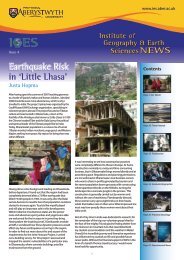
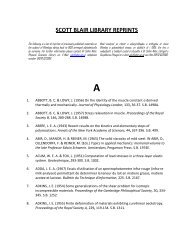
![[pdf] the council - Aberystwyth University](https://img.yumpu.com/8200062/1/184x260/pdf-the-council-aberystwyth-university.jpg?quality=85)
